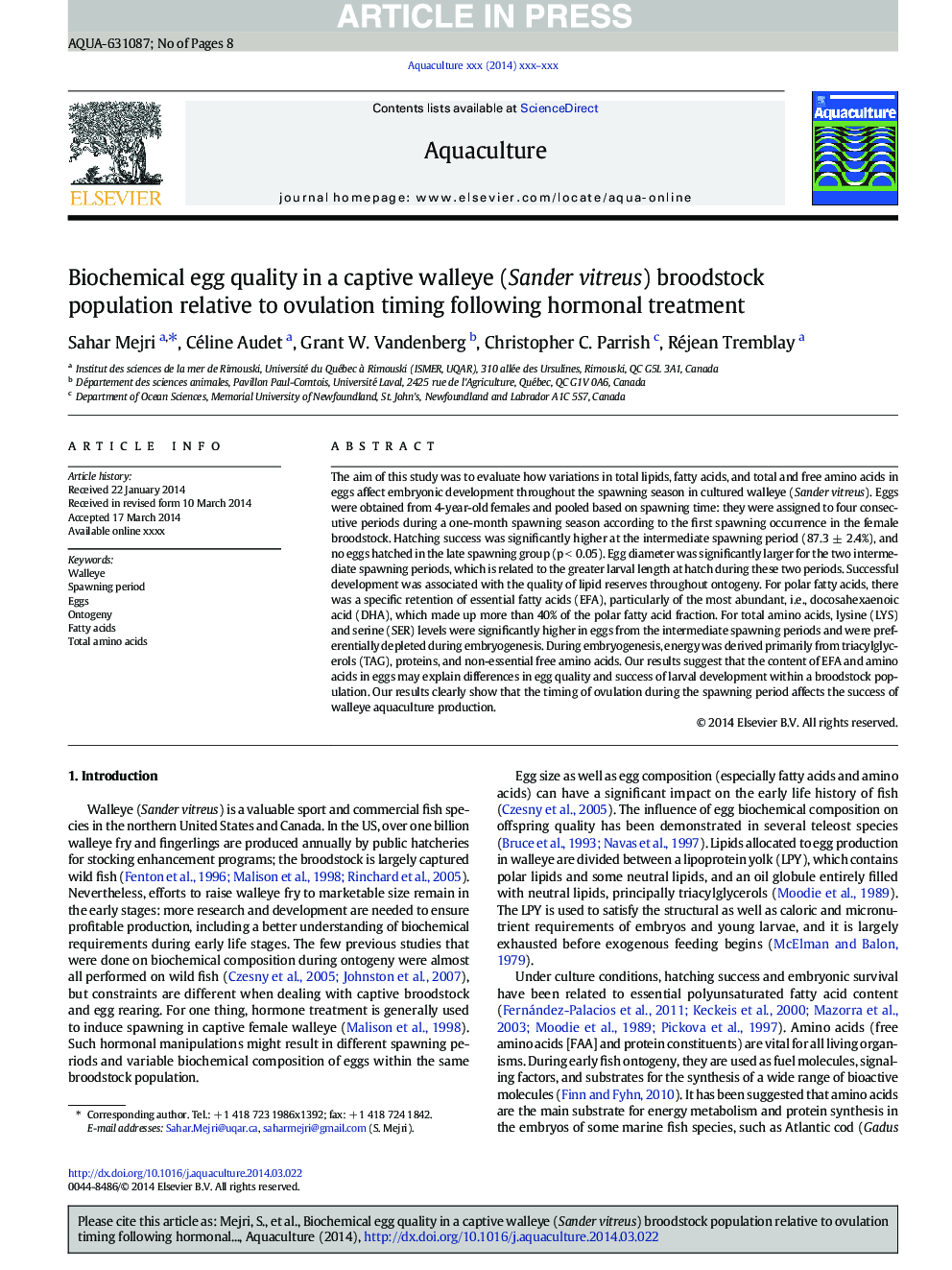| Article ID | Journal | Published Year | Pages | File Type |
|---|---|---|---|---|
| 8495012 | Aquaculture | 2014 | 8 Pages |
Abstract
The aim of this study was to evaluate how variations in total lipids, fatty acids, and total and free amino acids in eggs affect embryonic development throughout the spawning season in cultured walleye (Sander vitreus). Eggs were obtained from 4-year-old females and pooled based on spawning time: they were assigned to four consecutive periods during a one-month spawning season according to the first spawning occurrence in the female broodstock. Hatching success was significantly higher at the intermediate spawning period (87.3 ± 2.4%), and no eggs hatched in the late spawning group (p < 0.05). Egg diameter was significantly larger for the two intermediate spawning periods, which is related to the greater larval length at hatch during these two periods. Successful development was associated with the quality of lipid reserves throughout ontogeny. For polar fatty acids, there was a specific retention of essential fatty acids (EFA), particularly of the most abundant, i.e., docosahexaenoic acid (DHA), which made up more than 40% of the polar fatty acid fraction. For total amino acids, lysine (LYS) and serine (SER) levels were significantly higher in eggs from the intermediate spawning periods and were preferentially depleted during embryogenesis. During embryogenesis, energy was derived primarily from triacylglycerols (TAG), proteins, and non-essential free amino acids. Our results suggest that the content of EFA and amino acids in eggs may explain differences in egg quality and success of larval development within a broodstock population. Our results clearly show that the timing of ovulation during the spawning period affects the success of walleye aquaculture production.
Related Topics
Life Sciences
Agricultural and Biological Sciences
Aquatic Science
Authors
Sahar Mejri, Céline Audet, Grant W. Vandenberg, Christopher C. Parrish, Réjean Tremblay,
